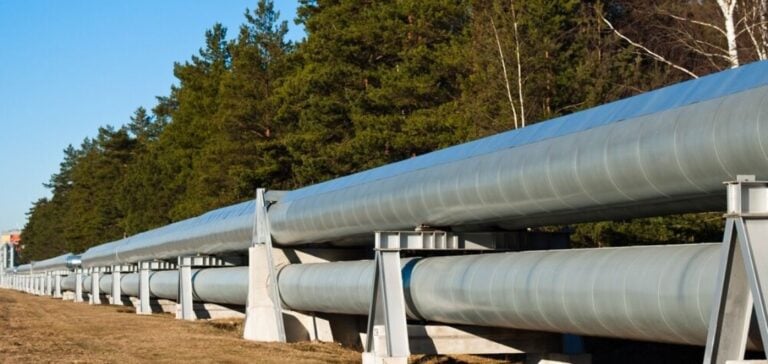The dynamics of natural gas exports between Canada and the United States are undergoing a significant transformation.
In July, Canadian exports rose to 6.5 billion cubic feet per day, despite declining domestic production.
This is the result of high inventories, which are depressing gas prices in Alberta and enabling increased cross-border flows.
Technological and climatic challenges
Climatic challenges, with exceptionally high temperatures in July, have affected Canadian natural gas production.
Indeed, field gathering infrastructures, designed primarily to withstand winter temperatures, struggle to operate efficiently in intense heat.
This situation led to a drop in production, falling to an average of 16.8 billion cubic feet per day at the beginning of July, before rising slightly to 17.5 billion cubic feet per day at the end of the month.
At the same time, high inventories in Canada, the result of a particularly mild winter, contributed to lower prices on the Alberta market (AECO), making Canadian gas competitive on the US market.
Gas prices at AECO averaged over $1 per million BTU below those at the U.S. Henry Hub, boosting exports.
Economic and regulatory implications
This increase in exports has a significant economic impact.
It partially offsets the reduction in gas production in the United States, where production fell by 1.9 billion cubic feet per day year-on-year.
However, total supply fell by only 1.2 bcf/d, thanks to increased imports from Canada.
From a regulatory point of view, the authorities in both countries are keeping a close eye on this development.
Managing reserves and regulating exports are crucial to maintaining the balance between supply and demand, while guaranteeing the energy security of both nations.
Policies to support storage and transport infrastructures play a key role in this cross-border dynamic.
Future prospects and the impact of LNG
In the medium term, increasing demand for liquefied natural gas (LNG) could significantly alter market dynamics.
The Shell-led LNG Canada project, with a production capacity of 14 million tonnes per year, is scheduled to begin operations in mid-2025.
This project is already in the pre-commissioning phase, and should soon be receiving flue gas.
This new liquefaction capacity could tighten the Canadian gas market, reducing exports to the USA as gas is redirected to the LNG market.
However, with reserves likely to be full as winter approaches, Canada could maintain a storage surplus in 2025, mitigating the impact of new LNG exports on prices.
Analysts at Commodity Insights forecast a reduction in gas flows to the USA in 2025 and 2026, as the ramp-up of Phase 1 of the LNG Canada project temporarily outstrips production from Western Canada.
In conclusion, the current increase in Canadian natural gas exports to the USA, supported by high reserves and competitive prices, plays a crucial role in North American energy stability.
However, the entry of LNG and future regulatory developments require continued vigilance to maintain this delicate balance.
Cross-border cooperation and investment in infrastructure will remain essential to navigate this phase of energy transition.






















